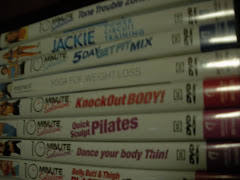I couldn't repeat the feat of climbing the 5.8 Face Plant route that I climbed last week. I tried and I tried but I couldn't make it to the top. Take after take left me drained and every other route after that was onerous.
While I was belaying, this woman helping with the introductory rock class pointed out my technique to one of the youngsters. Who would have thunk it? At one point in time, I thought that I would never get belaying down. I used to keep a death grip on the rope but I'm so relaxed now. Relaxing was key to learning how to float and it seems like relaxation works in a number of venues. Of course...
There are not a whole lot of videos out there with tips on how to rock climb but here's a decent one and although it leans toward bouldering, there are still some useful tips and random facts for beginners.
I'm going to start doing some exercises specifically to help me with rock climbing. This Wikihow article, How to Improve at Indoor Rock Climbing, has some good suggestions which I plan on implementing soon, especially the push-ups which I've gotten away from doing.
Arms: Improve your grip by doing exercises that will strengthen the arms and wrist/forearm region. Use a squeeze ball regularly to strengthen the wrist and hand region; lift small weights frontwards and sideways to improve overall arm strength. Try static hangs on a bar to increase your capacity to do static hangs while climbing. Better to discover on the low bar than a high wall that you can't do this!
Upper body: Pull-ups are brilliant for increasing upper body strength. Even a mere 10 a day done regularly will make an enormous difference to your strength capacity.
Keep your bum into the wall as you climb, doing so will assist your body in going up. Because your bum, or the gluteus maximus are the largest muscles in your body. Which means they weigh a lot and will pull your body downward as you climb.
Maintain three points of contact as you climb. This means that you can have one limb off the wall, so you can rest it. (i.e. Two hands one foot or two feet one hand.)










No comments:
Post a Comment